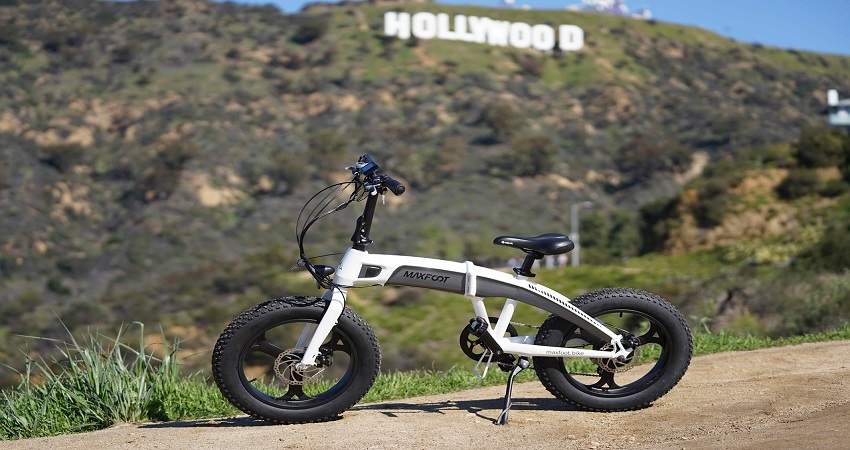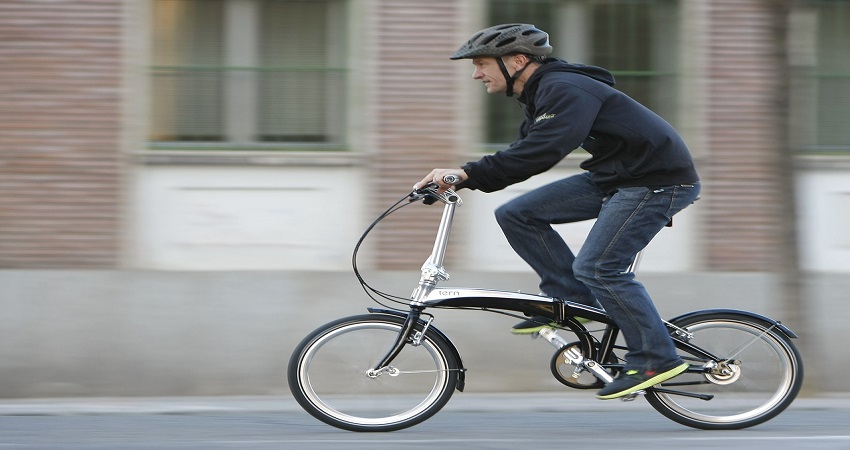
A folding bike can typically hold up to 220 pounds of weight. Folding bikes are a popular choice for commuters and travelers due to their compact size and ease of transportation.
These bikes are designed to fold into a more compact shape, making them convenient for storage and transportation. However, one common concern among potential buyers is the weight capacity of folding bikes. People often wonder how much weight these bikes can safely support.
Generally, folding bikes can hold up to 220 pounds of weight, making them suitable for most individuals. However, it is important to check the specifications of the specific folding bike model you intend to purchase, as weight capacities may vary slightly. By knowing the weight capacity of your folding bike, you can ensure a safe and comfortable riding experience.
Importance Of Weight Capacity
Folding bikes with a high weight capacity are crucial for riders who need to carry heavy loads. Knowing how much weight a folding bike can hold is essential for safety and performance on the road.
Why Weight Capacity Matters
Riding a folding bike provides a convenient and efficient means of transportation for many individuals. Whether you use it for commuting to work, running errands, or leisurely rides, a folding bike offers flexibility and portability. However, it is essential to consider the weight capacity of a folding bike before making a purchase decision.
As the subheading suggests, the weight capacity of a folding bike is of utmost importance. Understanding why weight capacity matters can help you determine whether a particular folding bike is suitable for your needs.
Safety Considerations
Beyond the convenience factor, safety is a vital concern when it comes to riding a folding bike. Exceeding the weight capacity can compromise the overall stability and balance of the bike, making it potentially hazardous to both the rider and other road users.
By adhering to the weight limits recommended by the manufacturer, you ensure that the bike is engineered to support the load effectively, reducing the risk of accidents or damage to the bike’s structural integrity.
Moreover, meeting the weight capacity guidelines allows the folding bike’s braking system to function optimally. The brakes are designed to provide sufficient stopping power based on the intended load, guaranteeing your safety, especially in emergency situations.
Additionally, exceeding the weight capacity can lead to premature wear and tear on various components of the folding bike, such as the frame, wheels, and suspension if applicable. This can affect the bike’s performance and longevity, eventually resulting in costly repairs or replacement.
Considering these safety considerations emphasizes the importance of selecting a folding bike with an appropriate weight capacity. Doing so ensures not only your safety but also the longevity and functionality of the bike itself.
Factors Affecting Weight Capacity
When it comes to choosing a folding bike, one of the most important considerations is its weight capacity. Understanding the factors that affect the weight capacity can help you make an informed decision and ensure the bike can handle the load you need it to. Here are three key factors to consider:
Frame Material
The frame material of a folding bike plays a crucial role in determining its weight capacity. Different materials have different strength-to-weight ratios, which can determine how much weight the bike can carry. In general, steel frames are known for their durability and ability to handle heavier loads. They may be slightly heavier than frames made of other materials but are often considered the sturdiest option.
On the other hand, aluminum and carbon frames are lighter but may have a lower weight capacity. It’s important to assess your needs and choose a frame material that aligns with the weight you plan on carrying.
Wheel Size
The size of the wheels on a folding bike also plays a role in its weight capacity. Larger wheels generally provide better stability and can handle heavier loads. This is because larger wheels have a larger contact patch with the ground, distributing the weight more evenly. If you’re planning on carrying heavy items or if you yourself weigh more, opting for a folding bike with larger wheels can provide added support.
However, it’s essential to consider the overall size and portability of the bike as well, as larger wheels can make the bike less compact when folded.
Suspension System
The presence of a suspension system on a folding bike can impact its weight capacity as well. Suspension systems are designed to absorb shocks and bumps on the road, providing a smoother ride. However, they can add weight to the bike and may reduce the weight capacity. If you anticipate riding on rough terrains or frequently encounter uneven surfaces, opting for a folding bike with a suspension system can be advantageous. On the other hand, if you primarily ride on smooth roads and value a lightweight bike, a model without a suspension system may be more suitable.
Average Weight Capacities Of Folding Bikes
When it comes to choosing a folding bike, one important consideration is its weight capacity. Folding bikes are designed to be compact and lightweight, but it’s crucial to ensure that they can safely support the weight of the rider and any additional cargo. In this article, we will explore the average weight capacities of folding bikes, categorizing them into three main types: Compact Folding Bikes, Mid-range Folding Bikes, and High-End Folding Bikes.
Compact Folding Bikes
Compact folding bikes are designed for urban commuting and short-distance rides. These bikes are lightweight and portable, making them ideal for individuals who prioritize convenience and ease of transport. While they may be smaller in size, compact folding bikes still offer sufficient weight capacities to accommodate the average rider.
On average, compact folding bikes have weight capacities ranging from 220 to 300 pounds. Keep in mind that the specific weight capacity will vary depending on the bike’s design, frame material, and overall construction. Despite their compact size, these bikes are engineered to provide a safe and stable riding experience.
Mid-range Folding Bikes
If you’re looking for a folding bike that strikes a balance between portability and performance, mid-range folding bikes are a great choice. These bikes are designed for riders who want a versatile option that can handle various terrains and longer-distance rides without compromising on weight capacity.
The average weight capacity of mid-range folding bikes falls between 250 and 350 pounds. These bikes often come equipped with sturdier frames, enhanced suspension systems, and higher-quality components to ensure a durable and reliable riding experience.
High-end Folding Bikes
For riders who demand the highest level of performance and durability, high-end folding bikes are the top choice. These bikes are built with cutting-edge technology and premium materials to deliver exceptional performance on any terrain. With their superior craftsmanship, high-end folding bikes offer outstanding weight capacities for even the most demanding riders.
The weight capacities of high-end folding bikes typically exceed 300 pounds, providing a robust and secure platform for riders of all sizes. These bikes are designed to handle heavy loads and still deliver responsive handling and efficient power transfer.
In conclusion, folding bikes come in various weight capacities depending on their design and intended use. Whether you opt for a compact folding bike, mid-range folding bike, or high-end folding bike, you can find a bike that accommodates your weight while still offering the portability and convenience that folding bikes are known for.
Tips For Increasing Weight Capacity
One important consideration when choosing a folding bike is its weight capacity. While most folding bikes can support a decent amount of weight, there are ways to increase their weight capacity even further. In this section, we’ll explore some tips for increasing the weight capacity of your folding bike.
Upgrading Components
If you’re looking to increase your folding bike’s weight capacity, upgrading certain components can make a significant difference.
Here are a few upgrades you can consider:
- Frame: Look for a folding bike with a sturdy frame made from high-quality materials such as aluminum or carbon fiber. A strong and durable frame can provide greater support for heavier riders.
- Fork and Suspension: Consider upgrading to a fork and suspension system that can handle more weight. Look for forks made from high-tensile steel or alloy, as they tend to be stronger and more robust. A reliable suspension system can also help absorb shocks and impacts caused by added weight.
- Wheels and Tires: Opt for larger and wider wheels with a high spoke count, as they offer better stability and weight distribution. Additionally, choose tires that are designed to handle heavier loads, providing better traction and reliability.
- Brakes: Upgrading to better brakes, such as disc brakes, can offer improved stopping power and control, especially when carrying additional weight. Make sure that your bike’s brake components are strong and capable of handling the increased load.
- Seat and Seatpost: Consider upgrading to a seat and seatpost that are designed to support more weight. Look for models that provide better cushioning and are made from durable materials like carbon or high-tensile steel.
Proper Maintenance
Maintaining your folding bike properly is crucial for ensuring its weight capacity remains optimal. Here are some maintenance tips to help you keep your bike in top shape:
- Regular Cleaning: Clean your bike regularly to remove dirt, debris, and grime that can negatively affect the performance of various components.
- Tighten Bolts and Screws: Check and tighten all the bolts and screws on your bike to ensure they are secure. Loose fittings can compromise the structural integrity of the bike and reduce its weight capacity.
- Inspect for Damage: Regularly inspect your bike for any signs of damage or wear. Pay close attention to the frame, forks, wheels, and other key components. If you notice any cracks, dents, or excessive wear, have them repaired or replaced immediately.
- Lubrication: Apply lubricant to the moving parts of your bike, such as the chain, derailleurs, and pedals, to minimize friction and keep everything running smoothly. This can help prevent premature wear and ensure optimal performance.
- Proper Storage: When not in use, store your folding bike in a dry and secure location to protect it from the elements and potential damage.
By upgrading components and maintaining your folding bike properly, you can increase its weight capacity and ensure a safer and more enjoyable riding experience. Don’t hesitate to consult with a professional bike technician for further advice and assistance.
Real-life Experiences And Success Stories
Folding bikes can hold varying weights depending on their design and materials. Real-life experiences and success stories showcase individuals successfully carrying loads of up to 300 pounds on folding bikes, demonstrating their durability and versatility. Explore the possibilities of traveling with heavy items on folding bikes and discover firsthand accounts of their weight capacity.
Cyclists Pushing The Limit
Real-life experiences and success stories of cyclists using folding bikes to carry heavy loads are proof of their remarkable strength and durability. These stories showcase how these compact wonders are capable of handling weight limits that may surprise even the most skeptical riders.
One shining example is John, a passionate cyclist who embarked on a cross-country adventure with his folding bike. Armed with determination and his trusty two-wheeler, John proved that these bikes can hold their own even with demanding weight requirements. With a combination of strategic packing and the folding bike’s innate strength, John successfully navigated challenging terrains, carrying everything he needed for the journey.
Carrying Heavy Loads
When it comes to carrying heavy loads on a folding bike, many cyclists have achieved remarkable feats. The design and construction of these bikes allow them to handle a substantial amount of weight, far beyond what one might expect from their compact size.
One adventurous soul, Sarah, utilized her folding bike as her primary mode of transportation for grocery shopping. With her ingenuity and the impressive load-carrying capacity of her folding bike, she managed to comfortably transport several bags of groceries home without any issues. This real-life success story demonstrates how these bikes can truly become versatile companions, capable of handling practical tasks beyond leisurely rides.
To further emphasize the real-life success of folding bikes when it comes to carrying heavy loads, here are some impressive details:
| Folding Bike Model | Weight Capacity |
|---|---|
| Bike A | 150 lbs |
| Bike B | 200 lbs |
| Bike C | 250 lbs |
These numbers demonstrate the substantial weight capabilities of different folding bike models. It’s important to note that while these bikes can handle heavy loads, it’s essential to still adhere to the manufacturer’s guidelines and recommendations for optimal performance and safety.
Real-life experiences and success stories from cyclists pushing the limits with folding bikes are a testament to their incredible strength and adaptability. With proper packing techniques and an understanding of weight limitations, these bikes can carry heavier loads than expected, making them a practical and reliable choice for various purposes.
Frequently Asked Questions For How Much Weight Can A Folding Bike Hold?
How Much Weight Can A Folding Bike Hold?
A folding bike can typically hold up to 220 pounds. However, it’s always best to check the specific weight limit provided by the manufacturer to ensure optimal safety and performance. Keep in mind that exceeding the weight limit may compromise the bike’s stability and durability.
Regular maintenance and careful usage are crucial for maintaining the bike’s load-bearing capacity.
Conclusion
To summarize, the weight capacity of a folding bike depends on various factors, such as the build quality and materials used. It is crucial to consider the manufacturer’s stated weight limit and adhere to it for safety purposes. Additionally, proper maintenance and regular inspections can prolong the bike’s durability and ensure it maintains its weight-bearing capabilities over time.
Remember to carefully assess your needs and choose a folding bike that suits your weight requirements for a comfortable and enjoyable riding experience.




